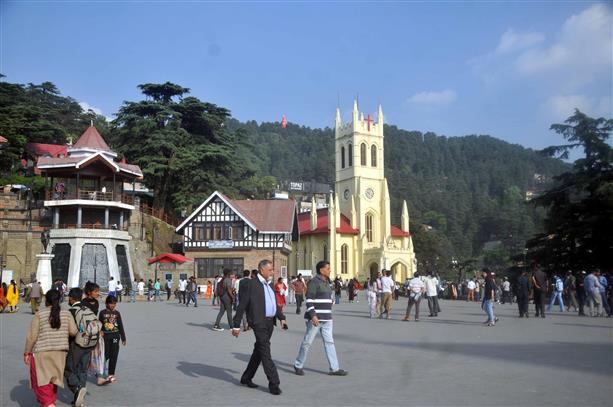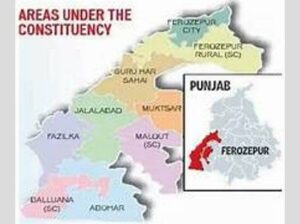Shimla, February 5
Harsh winters with heavy snowfalls beginning in December itself, covering Shimla in a white mantle of snow till March-end or even early April have become a thing of the past now.
The Himachal Pradesh capital, which used to be draped in white and attract tourists from all over, now mostly presents a brownish look with dry grass covering the hills.
There is growing concern among environmentalists and locals over the rising temperatures and depleting snow cover that the snow line is moving upwards and the “Queen of Hills” gradually losing her winter charm. Its effect now is more visible than ever in the hill city’s dwindling winter tourist inflow and drying water sources.
According to climate experts, the snow line is receding and Shimla’s adjoining tourist towns Kufri and Narkanda, popular skiing destinations, too, are experiencing scanty snowfall.
The state capital’s tourism industry is taking a hit due to the falling numbers and there is a dire need to find more tourist spots and activities in and around the city, Tourism Industry Stakeholders Association president M K Seth said.
Tourism contributes about 7.5 per cent of the hill state’s GDP.
Snow also plays a vital role in replenishing the city’s perennial sources of water such as springs, streams and rivulets. Scanty snowfall means the water sources dry up and the towns face scarcity.
In 2018, the problem of water shortage had risen to such alarming levels that water supply had to be restricted to every fifth or sixth day, severely denting the inflow of tourists during the peak summer season.
As per meteorological department data, the snowfall from November to March in Shimla in 1989-90 was 556.7 cm while the figure stood at just 105.2 cm in the corresponding period of 2008-09.
Old-timers recall that a record snowfall of 360 cm to 450 cm was witnessed in 1945 in Shimla in a single spell, which had brought normal life to a standstill and even the railway station had collapsed under heavy snow.
“There is an erratic pattern of precipitation as climate change is being witnessed due to global warming. Extreme weather events are being witnessed and a gradual decrease is being seen in the number of snow days,” the director of the local meteorological office in Shimla Surender Paul told PTI.
Recalling his experience during winters, octogenarian O P Sood said, “Plaintive monkeys used to wail down the trees in search of food and raid houses and shops with more than usual daring, and most of the residents used to migrate to the plains during winters. But things have changed now.”













